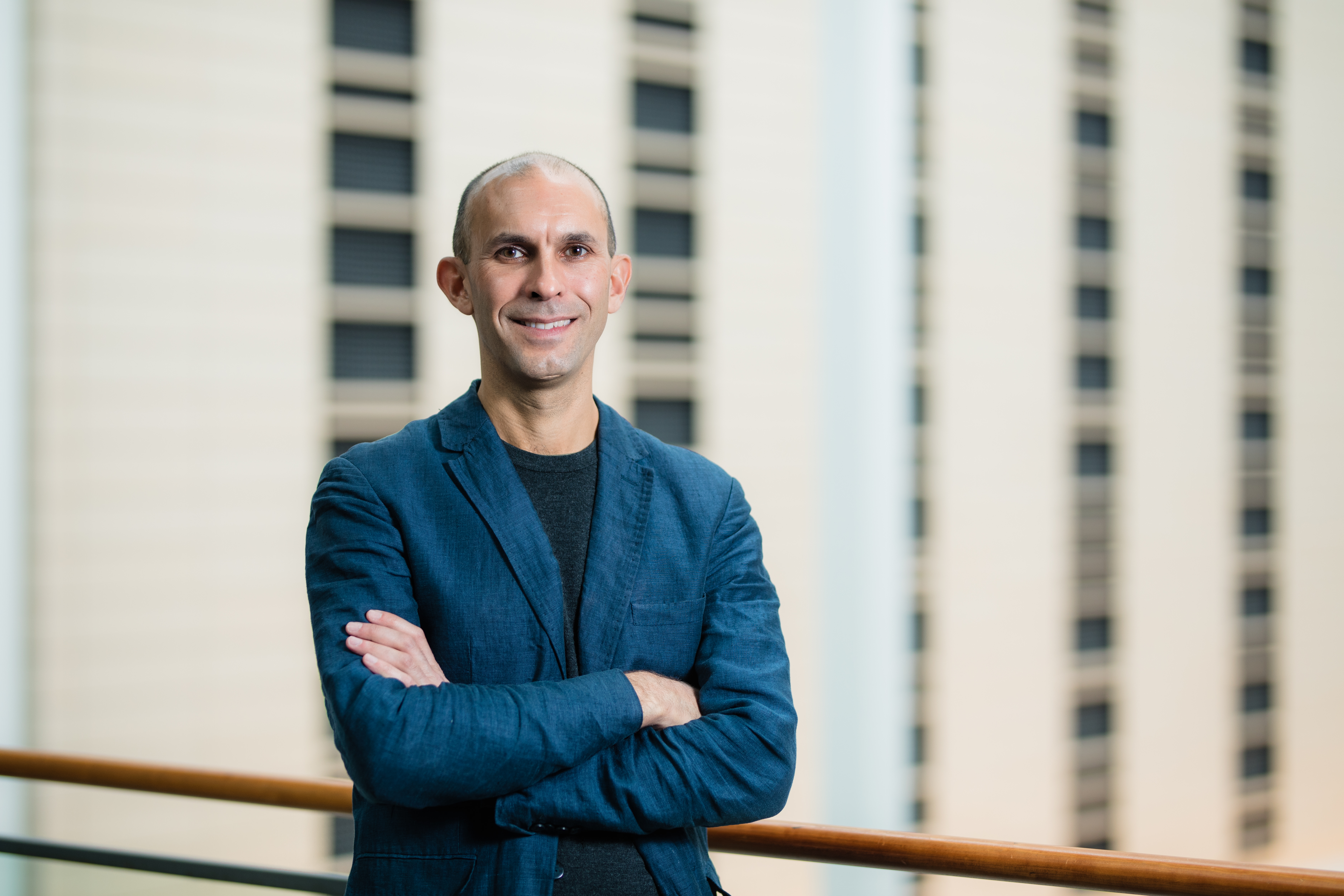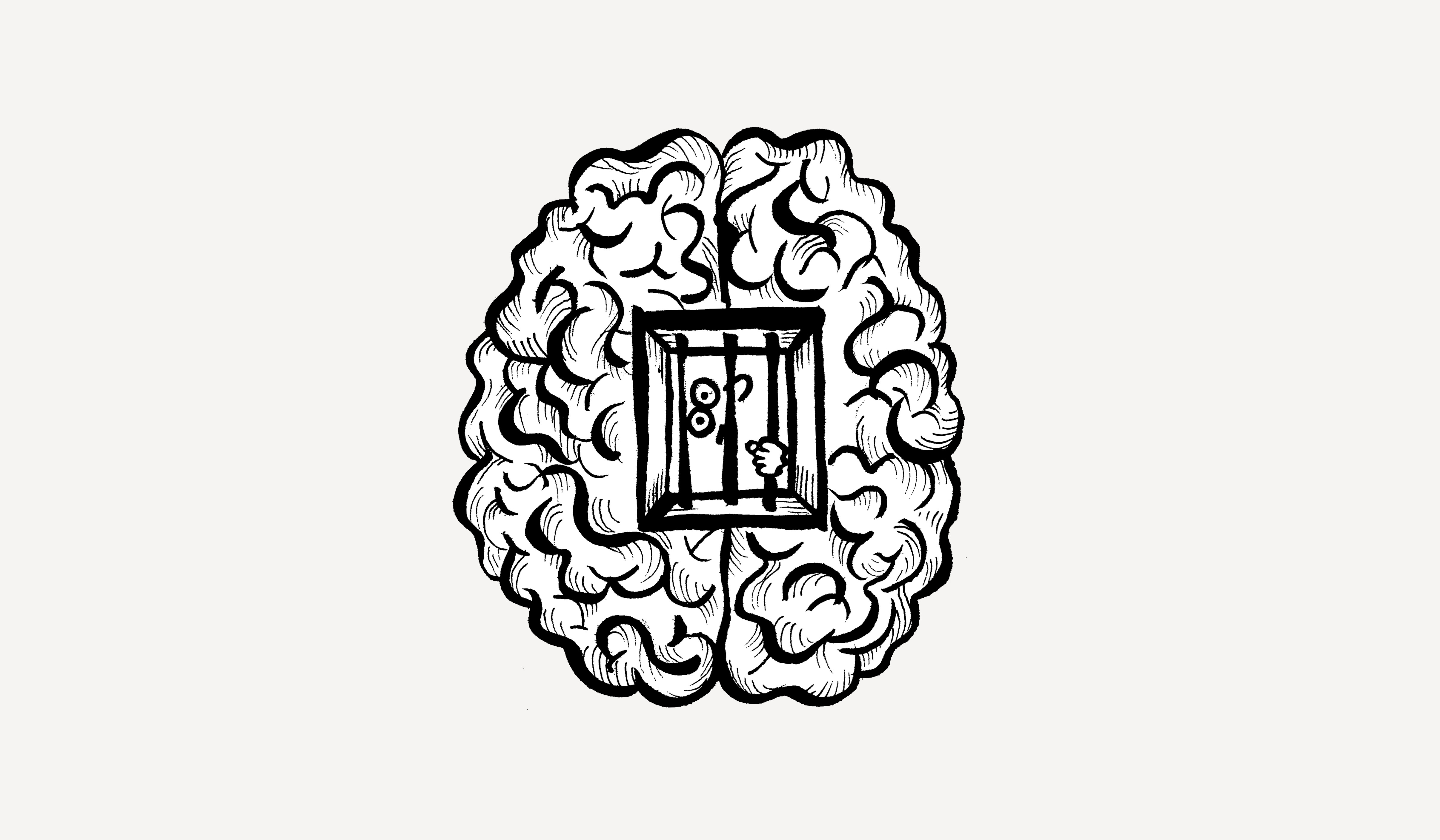
I’m sitting at my desk, trying to work on this article. It’s quarter past ten. Outside, the sky is blue. Next to me, coffee is steaming. The cats are fed and they’re now basking in the sun. What an idyllic scene! Soon, however, it gets disrupted by a grinding (or rather whirring) noise coming from a lawnmower. Then, outside our apartment block, a car alarm goes off and an ambulance siren starts whining. I close the window and get back to work.
Wait… Yesterday, I finished reading The Break – a novel by Katherena Vermette, a Canadian writer of Métis descent. I feel like I should learn more about Ojibwe. Information is falling out of the internet like crisps from a torn bag. I jump between links, trying to remember names, maps, surnames and symbols. After reading about the First Nations, I look at an article on herbs that were supposedly used by Native Americans to boost immunity. This brings me dangerously close to articles about the pandemic. I check the COVID-19 news and read about the easing of restrictions and the vaccination schedule. The current coronavirus surge is receding, but scientists are already warning the public of another virus. Suddenly, I realize I have to ask my children how they’re feeling after getting their jabs. I make a call, ask and listen. Soon, I can’t even remember why I’ve called.
I need to stop: I’m supposed to write. My piece is due on Friday and I’m still far behind. OK, just a quick look at Facebook and I’m getting back to work. My friends from Kraków might have reached out. Well, they haven’t, but I got invited to a reading and received a petition calling for environmental education. This is extremely important and I should sign it right away! But I also want to read it carefully to understand what exactly they’re calling for. The state of this planet is deteriorating rapidly and an apocalypse is looming on the horizon. I scroll through my newsfeed nervously. I like some posts and ignore others; make a comment and share an article. Going through the posts, I come across ads (oh, nice bird pattern hooded sweatshirt). Already anxious, I check my emails.
Three hours later, I’m fuming. Information is running through my head. I know only slightly more about Ojibwe than in the morning. Mad at myself and guilt-ridden, I head to the kitchen. The cookies should be around here somewhere… Yes, I’m fully aware that this is an unhealthy habit – I skipped breakfast and I’m now going to devour carbs! But, oh well, this is what I need now! Let him who has never experienced such craving cast the first stone (or cookie).
Everyone needs attention
The above-described state is referred to as overstimulation. Like every form of excess, it becomes a burden, mostly for our psyche. Every single day, the internet, television, radio and social media bombard us with words and images, all of which carry various emotions. Everyone takes photos and videos, writes blogs and makes comments. Everyone has something to communicate and wants to be heard and seen, including myself. All of us seek attention.
In his article W morzu informacji [In a Sea of Information], Polish psychologist Igor Rotberg cites data collected by Eryk Mistewicz (president of the Institute for New Media in Poland). As has been demonstrated, “every day we absorb around 100,500 words, which […] is over 350% more than in 1980.” Moreover, people send 12 million texts each minute and 294 emails each day. According to a study carried out by the Institute for the Future among office workers, every day they receive around 200 emails. For that reason, 71% feel stressed, while 60% feel overwhelmed. In addition, as a 2005 study conducted by the University of London suggests, “workers who were distracted by emails and phone calls suffered a loss of IQ twice as great as people smoking marijuana,” to quote Jan Fazlagić from Poznań University of Economics and Business.
The extent of the increase in published information that has taken place across the centuries is well illustrated by the fact that in 1472 the collections of the renowned Queens’ College Library at the University of Cambridge comprised 199 volumes, whereas today around 300,000 new books are published each year across the world.
Still, it’s not books that constitute a major source of information these days, but the internet. Far more popular and much cheaper than the printed word, it provides a larger audience with easy and quick access to information. At the same time, however, it’s responsible for the production and dissemination of low-quality content, fake news, and all sorts of manipulations. This is why we have to approach internet-derived information with extra caution and always verify sources, which means more effort for our already overstimulated brains. This ever-increasing avalanche of content has been referred to as ‘information overload’. The term was introduced in 1970 by the futurologist Alvin Toffler. He predicted that a rapid increase in information would become a major problem for humanity.
As Igor Rotberg explains in the aforementioned article: “The information explosion we’re exposed to exceeds the processing capacity of the human brain. This applies to both the initial selection phase and subsequent stages: storing information and managing it in accordance with the demands of life. In other words, while our demand for information is increasing, our ability to process it effectively is decreasing. Computing power continues to grow, yet the brain’s processing capacity has remained the same for a very long time.”
Contrary to what some might believe, information overload doesn’t help us make better decisions. As the Security Studies Program (SSP) run by Massachusetts Institute of Technology and the US army reveals, the amount of data collected by commanders doesn’t necessarily translate into an improved situation on the battlefield. Swamped by an information avalanche, we lose the ability to distinguish between high- and low-quality content. Exhausted and frustrated with our inability to process the available data, we make poorer choices. We lack the time to take informed decisions and seem unable to focus, since tonnes of new content is waiting to be processed.
David Lewis, a psychologist from the International Stress Management Association (ISMA) has identified and described the so-called ‘information fatigue syndrome’. Its physical symptoms include high blood pressure, low vision and indigestion, while psychological symptoms include frustration, confusion, hindered decision-making ability, aggression, lower concentration and sleep problems. Sound familiar?
Nevertheless, it seems almost impossible to imagine life without web class registers, online forums and discussion groups; Facebook, YouTube or Spotify. We’ve either got hooked on these tools or are afraid that we’ll miss out on something if we don’t utilize them. The latter phenomenon has already been identified by psychologists as FOMO – the ‘fear of missing out’ that propels us to constantly check emails, text messages and news. FOMO is about feeling anxious that we’ll overlook something or fail to respond to it. This fear grows out of our natural need for social approval, which in this case is pushed to the extreme: it becomes so overpowering that it strips away our freedom.
A large number of stimuli coupled with a pressing need to stay informed make us think that we’re the centre of attention. Overstimulation makes us suppress our anxieties and unwanted thoughts, silencing at the same time something that is much more important than all that noise: self-awareness, self-reflexivity, attentiveness and true emotions.
Head in the clouds (and the hammock)
I can anticipate this moment. The level of fatigue reaches its limit. I get easily irritated about small things – each incoming email, phone call or text message. I’m unable to focus on anything and don’t want to talk to anyone. I wish there was a monthly limit on the words each of us can utter. If someone has already reached the maximum limit, they need to remain silent for the rest of the month. I imagine riding the tram in perfect silence (I love this vision!). It’s quiet everywhere: in the shops and streets, even on the radio. Even though it won’t last forever, one day is good… Or maybe a week.
The point isn’t to completely escape the outer world, but to change how we process incoming data. Create an information levee: reduce your time online and carefully select content. Also select friends. As Robin Dunbar, Professor of Evolutionary Anthropology at Oxford University, found, our brain is capable of remembering as many as 150 friends. We’re simply unable to maintain more social relations. It’s also important to schedule relaxation time and surround ourselves with empty space: look thoughtlessly at moving clouds, listen to music and not do anything else; allow yourself to be bored.
During the 2013 conference of the British Psychological Society’s Division of Occupational Psychology, scientists from the University of Central Lancashire shared their research findings about the blessings of boredom. When we’re bored, we enter a dreamy state, which stimulates creative thinking. Daydreaming, relaxing in a hammock or walking in the forest aren’t a waste of time. On the contrary, they constitute a form of investment in our growth and a precious lesson on how to be alone.
How to find this breathing space then? Meditation is always a good point of departure. A meditating brain is a happy brain. Regular sessions help us deal with life challenges and better respond to stressful situations and negative thoughts. They teach us how to focus. American psychologist and psychiatrist Richard J. Davidson took brain scans of meditating Buddhist monks. He found out that the constant practice of meditation permanently restructures the amygdala – the part of the brain responsible for emotions, especially negative ones. He shared his findings in an inspiring book, Altered Traits, co-authored with Daniel Goldman, a science journalist working on emotional intelligence.
Similarly, yoga also has many beneficial effects. Asanas – from the relatively easy ‘downward dog’ to the more demanding ‘compass’ – improve both physical and psychological health. Yoga helps us concentrate and derive joy from everyday situations, especially when we practice it outside – on the grass, in the forest or on an empty beach. Since a lot has been already written about different types of yoga and their advantages, let’s take a look at what is all the rage in the relaxation world these days (I’m aware the word ‘rage’ might seem inappropriate in this context, though).
Floating with an empty head?
The method that has become widely popular with our overworked world is float therapy. A flotation tank – also known as a sensory deprivation chamber – is a soundproof cabin, usually 2.4-metres-long, 1.4-metres-wide and 2.2-metres high. It is saturated with Epsom salt up to the level of 25 centimetres. Importantly, the water temperature there is stable and heated to skin temperature (around 35°C).
“Salty water makes your body float. You’re floating freely and even your bum doesn’t touch the bottom,” Paweł Gutral graphically elucidates. Paweł is a yoga and meditation teacher who used to own a flotation tank in Gdańsk. “It’s recommended to switch off the lights there, but if you want, you can keep the less invasive LED lamps on. It’s quiet and dark inside. Neither gravity nor any sensory experience can be registered. The idea is to provide as few stimuli as possible.”
Why? “So that a person can enter a state of deep relaxation,” Paweł clarifies. “When there’s nothing for our brain to analyse, it switches to a lethargic state and informs the body that it is now relaxing. As a result, the body becomes less tense and the person feels half-awake. Research has shown that during sensory deprivation, brain wave frequencies change from Beta (13-28 Hz; everyday activities) to Alpha (8-12 Hz; relaxation) or even Theta (4-7 Hz; on the verge of sleep, trance, meditation). Consciousness moves in waves: you feel drowsy and then awake. The mind is freed from thoughts. Those who have undergone float therapy told me that they felt as if their head was empty for the first time in their life. Their thoughts disappeared. Others mentioned brain-generated ‘movies’, which were like mental journeys. Many people would exit the cabin in euphoria. It’s no surprise given that when the body is cut off from external stimuli, endorphins are released. This state of profound rest can last up to 24 hours after the session.”
I wish I could enter this state now, since the place where I’m meeting Paweł – a café in a new neighbourhood of Gdańsk – is far from quiet. At first glance, everything looks idyllic: sundecks, blooming linden trees, glasses filled with orange water. Soon, however, we can hear noise coming from the nearby construction site: the whirring of hammer drills and the horrible rattling of a heavy, metal cart on the cobbled sidewalk. Paweł and I burst out laughing, because it’d be difficult to find a worse soundtrack to our conversation.
A moderate approach to relaxation
“Relaxation sessions in a floatation tank usually last no longer than an hour. But some people are afraid to spend this time there, wondering what they will do for so long,” Paweł explains. “Do they bring their phones with them then?” I jokingly ask, but Paweł’s response is rather serious: “You bet. One guy insisted that his phone was waterproof. I tried to explain that it’s not about his phone’s safety, but I don’t know what he eventually decided to do.” Then he adds: “A record-breaker spent five hours in the tank. He initially wanted to stay for seven hours, but this was too long for him. Before this attempt, he would regularly spend two hours in the chamber, so he had the necessary experience. But even relaxation requires a moderate approach.”
As research has shown, spending too much time in a sensory deprivation chamber might lead to anxiety, or even depression and hallucinations. Cut off from external stimuli, the brain generates its own sensations. Paweł’s longest floating session lasted for two hours. “Personally, I consider it a form of meditation for lazy people,” he says, smiling. “You don’t need to employ any special techniques or pull your wandering mind back into the present. Everything happens naturally. Well, almost everything. I had to confront my fear of the dark, which I’ve experienced since childhood. Like the fear of death, it’s overpowering. Darkness in the tank triggered it, but I didn’t give in. I continued float therapy to face my fear, focusing on breathing. The fear would return, but it would get less intense.” Just to reassure readers: the tank can be opened from the inside and the door can be left open. There’s also a panic button inside.
A return to fasting
Another cure for overstimulation (both old and new) is dopamine fasting, which is becoming increasingly popular in Silicon Valley. Dopamine is a neurotransmitter that plays an important role in the brain reward system. It’s responsible for our emotional state, including feelings of motivation. Like endorphins, it’s often called a ‘happy hormone’, even though it isn’t really a hormone. Dopamine is also released when we do something pleasurable (which might not always be healthy): eat, have sex, go shopping, drink alcohol, gamble (or get an avalanche of ‘likes’ under our social media post). All of these activities are very addictive. Unfortunately, the more often we engage in them, the weaker their effect is. Craving more dopamine, our brain pushes us towards compulsive eating, sex and workaholism.
Thus it is worth sometimes abstaining from pleasure, so that we can really savour it later. After all, we’ve been doing it for ages. Many religions recommend longer and shorter periods of fasting and refraining from sensuous pleasures. The Christian Lent, the Muslim Ramadan, fasting before Jewish holidays such as Purim, Pascha and Yom Kippur, the Buddhist pre-meditation diet. It’s not about mortifying, but rather purifying oneself; focusing on what is really important and exercising control over one’s desires and ego.
When I was a kid, my mum would abstain from drinking coffee throughout Lent. Since she was a great coffee lover, it was for her a real self-denial. I followed her example and didn’t eat any sweets or watch TV (this part was easy, though, since our black-and-white TV set was broken most of the time anyway). As Easter approached, I was really proud of my perseverance. Yet pride wasn’t the only reward: the first post-Lent candy tasted like heaven.
It’s the same mechanism that has made dopamine fasting so popular with the overstimulated inhabitants of Silicon Valley (and it’s now becoming increasingly popular across the world). In simple terms, it’s a bit like Vipassana, an orthodox form of Buddhist meditation. It requires cutting oneself off from media and social relations, as well as refraining from processed foods, sugar, drugs, sex, music and artificial light. The mind and sensory apparatus become immersed in silence.
This sounds great, but – attention – dopamine fasting also requires moderation. A lack of dopamine isn’t beneficial. On the contrary, it can lead to chronic fatigue, lack of energy, tension or even depressive episodes. Neuropsychologists argue that instead of denying ourselves the reward that comes with a dopamine shot, we should instead reduce the number of external stimuli – especially those that encourage unhealthy behaviours. Instead of scrolling through our Facebook newsfeed, let’s get together with friends in real life. Instead of posting an emoji, let’s share a real smile. And let’s hug each other. When we do that, an endorphin release is guaranteed (without overstimulation) – unless someone happens to be drilling or tearing something down in our neighbourhood.
Translated from the Polish by Joanna Mąkowska










